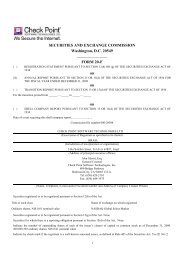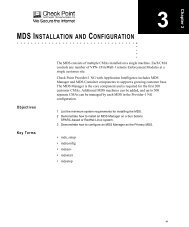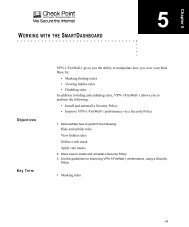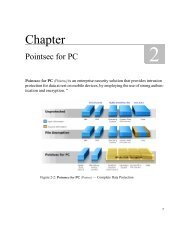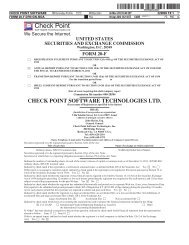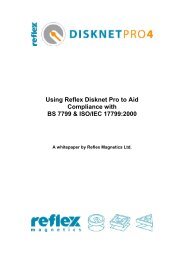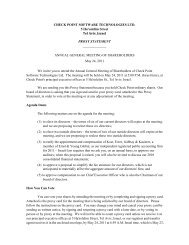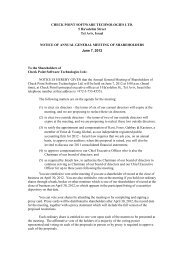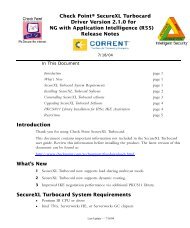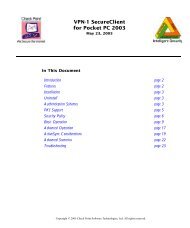Create successful ePaper yourself
Turn your PDF publications into a flip-book with our unique Google optimized e-Paper software.
UUID format<br />
As described in Using UUIDs and SSIDs the firewall assigns a UUID <strong>to</strong> each connection passing through<br />
it. This UUID is a 128 bit value built from four 32 bit value where only the first two are relevant.<br />
1. UUID value Timestamp<br />
2. UUID value A counter which is <strong>use</strong>d if the first UUID value is not unique<br />
3. UUID value The IP address of the local firewall (constant)<br />
3. UUID value A PID (currently a constant, can be ignored).<br />
Figure 83: UUID format<br />
When using the –o option <strong>to</strong>gether with the –u or –s option, <strong>fw</strong> moni<strong>to</strong>r does not write the full length<br />
128 bit value <strong>to</strong> the capture file. Instead <strong>fw</strong> moni<strong>to</strong>r writes down a stripped down 32 bit value. This<br />
value is composed of the two least significant bytes of the second UUID value (counter) and the two least<br />
significant bytes of the first UUID (timestamp).<br />
<strong>How</strong> <strong>to</strong> <strong>use</strong> <strong>fw</strong> moni<strong>to</strong>r Page 70 of 70<br />
Revision: 1.01



